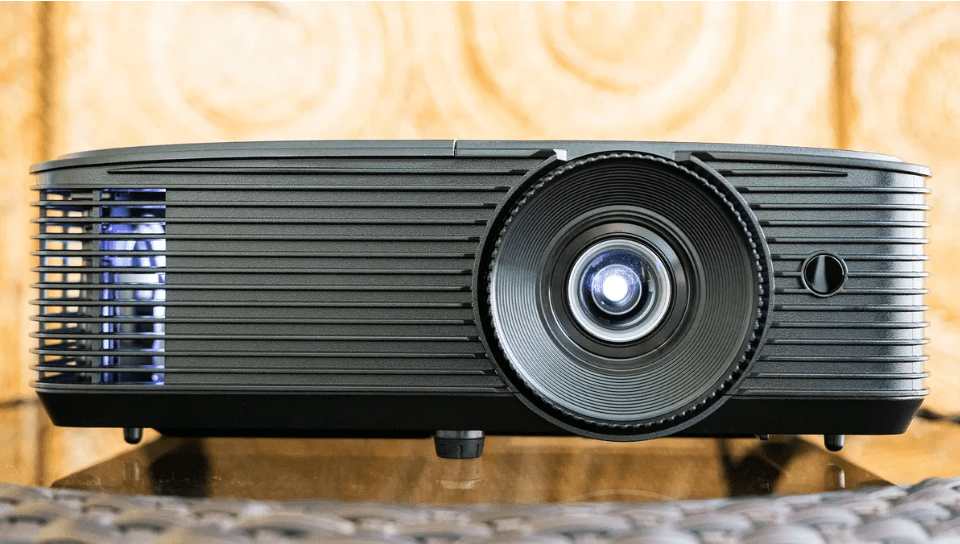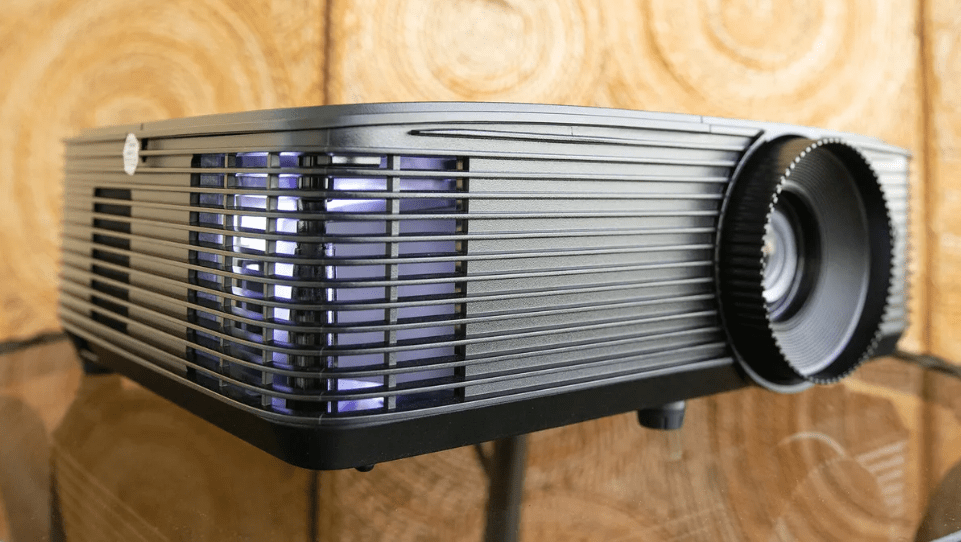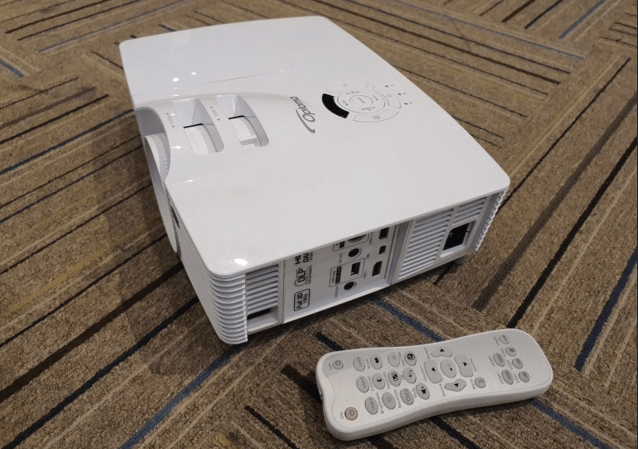At gagadget.com, your trust is our priority. We follow strict quality standards in our research, tests, and analysis of video projectors, to give you the best experience. Learn more
Optoma HD146X vs Optoma HD28dse: Comparison
Hey everyone, Jim's here. If you're in the market for an affordable 1080p projector for your home theater setup, you might be considering the Optoma HD146X and the Optoma HD28DSE. Both projectors offer impressive features and performance, but which one is the right choice for you?
I'll dive deep into the specifications, user reviews, and key differences to help you make an informed decision.
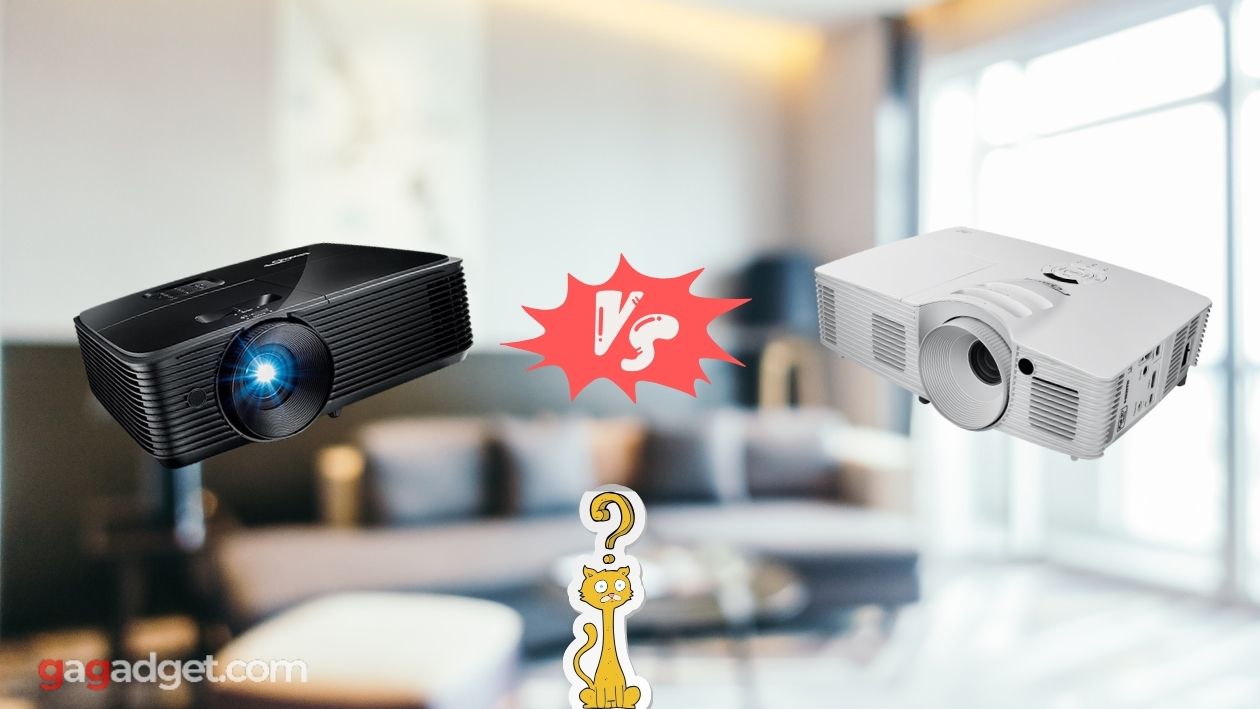
HD146X vs HD28DSE: At a Glance
I value your time and strive to deliver concise, relevant information without any fluff.
Here's a brief summary: The Optoma HD146X stands out with its high 25,000:1 contrast ratio and bright 3,600 lumen output, making it excel in dark room movie viewing. The Optoma HD28DSE, on the other hand, features the unique DarbeeVision video processing for enhanced sharpness and detail. It's also more portable with a built-in speaker.
Both projectors fall within a similar price range, but considering the overall performance and long lamp life, I'd recommend taking a closer look at the HD146X.
Table of Contents
- HD146X vs HD28DSE: Comparison Table
- HD146X vs HD28DSE: Design
- User Reviews of the HD146X and HD28DSE
- Top Alternative Projector Models to HD146X and HD28DSE
- HD146X or HD28DSE: Final Verdict
HD146X vs HD28DSE: Comparison
To understand the differences between the Optoma HD146X and HD28DSE, let's compare their key specifications side by side.
| Feature | Optoma HD146X | Optoma HD28DSE |
| Image |

|
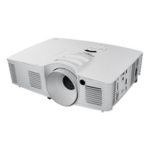
|
| Display Technology | DLP | DLP |
| Resolution | 1920 x 1080 (1080p) | 1920 x 1080 (1080p) |
| Brightness (Lumens) | 3,600 | 3,000 |
| Contrast Ratio | 25,000:1 | 30,000:1 |
| Lamp Life (Eco Mode) | 15,000 hours | 8,000 hours |
| Throw Ratio | 1.47:1 - 1.62:1 | 1.48 - 1.62 |
| Zoom | 1.1x | 1.1x |
| Connectivity | HDMI, USB, Audio Out | HDMI (MHL), USB-A Power, Audio Out |
| Built-in Speaker | No | Yes, 10W |
| Weight | 6.2 lbs | 5.7 lbs |
| Dimensions (W x D x H) | 12.4" x 9.5" x 4.3" | 12.4" x 8.8" x 4.3" |
| 3D Support | Yes | Yes |
| Warranty | 1 year | 1 year |
*April 28, 2024
Both the HD146X and HD28DSE use DLP technology and have native 1080p resolution. The key differences are in brightness, contrast, and special features. The HD146X is about 20% brighter at 3600 lumens vs 3000 for the HD28DSE. But the HD28DSE fights back with a higher 30,000:1 contrast ratio.
The HD146X boasts an impressive 15,000 hour lamp life in Eco mode, nearly double that of the HD28DSE's 8,000 hours. So the HD146X may save money on replacement lamps in the long run.
For placement flexibility, both have 1.1x zoom and very similar throw ratios. The HD28DSE has a slight edge in portability with its lighter 5.7lb weight and built-in 10W speaker. But the HD146X isn't far behind at 6.2lbs.
In terms of connectivity, the HD146X has HDMI, USB, and audio out, while the HD28DSE sports an HDMI port with MHL support (for connecting mobile devices), USB-A for power, and audio out. Unfortunately, neither model offers wireless connectivity options.
Both projectors support 3D, although performance may vary. The more expensive optics and electronics of the HD146X could potentially provide a better 3D experience with less crosstalk. But the HD28DSE is still capable of decent 3D, especially for its price.
Finally, there's the question of DarbeeVision technology, which is only present in the HD28DSE. This video processing enhances detail, sharpness, and contrast, but can create some artifacts at higher settings. It's a matter of taste – some love it, others find it artificial.
In summary, the HD146X is brighter, has a longer lamp life, and potentially better 3D quality. The HD28DSE stands out with its unique DarbeeVision tech, higher contrast ratio, built-in speaker, and MHL support.
HD146X vs HD28DSE: Design Comparison
Design preferences are subjective, but let's compare the looks of the Optoma HD146X and HD28DSE:
Optoma HD146X Design:
Optoma HD28DSE Design:
As you can see, both projectors have a very similar design in Optoma's signature chassis. The HD146X is slightly larger and has a more angular front panel, while the HD28DSE is more compact with rounded edges.
One noticeable visual difference is the placement of the focus and zoom rings. On the HD146X, they are separate and located closer to the lens. On the HD28DSE, the adjustments are combined into a single unit on top.
On the back, the HD146X offers 3 ports: HDMI, USB, and audio out. The HD28DSE adds a second HDMI with MHL and a USB-A for powering dongles. The HD28DSE also has speaker grilles on the sides, which the HD146X lacks.
Overall, both projectors have a clean modern look. The HD146X is more minimalist, while the HD28DSE is sleeker and more feature-packed. But there are no drastic differences in appearance. Either will blend nicely into any room without drawing undue attention.
Optoma HD146X or Optoma HD28DSE: Reviews
I've scoured through numerous online reviews to gather valuable insights from users who have hands-on experience with the Optoma HD146X and HD28DSE projectors. Let's take a look at their pros, cons, and real-world performance.
Optoma HD146X Reviews
Praises: The Optoma HD146X delivers an impressively bright and sharp image, especially for the price. It lights up my 120" screen with ease, even with some ambient light. The colors are vibrant and black levels are solid. As an avid gamer, I'm very pleased with the low input lag - it feels responsive and I don't notice any delay.
Setup was straightforward with the zoom and keystone adjustments. The projector runs quietly in Eco lamp mode which is my preference. While not the most stylish unit, it disappears when the lights are off. Overall, I'm thrilled with the big screen experience the HD146X provides on a budget.
***
Drawbacks: The main downside of the HD146X for me is the lack of lens shift and limited zoom range. It took some time to get the projector perfectly positioned for my screen - a ceiling mount was necessary in my case. I also wish it had another HDMI port for more connectivity options.
The built-in speaker is basically useless due to low volume and tinny sound, but that's not a dealbreaker since I have a surround sound system. Fan noise is noticeable in standard lamp mode, but you'll want to run in Eco mode for the best experience anyway. Despite some minor quirks, the HD146X is a great value pick.
Optoma HD28DSE Reviews
Praises: I'm really enjoying the HD28DSE so far. The DarbeeVision processing adds a nice boost in perceived sharpness and detail without looking too artificial. With the right settings, it makes the picture "pop" in a pleasing way, especially with animated films and video games.
This projector has plenty of brightness and contrast for my needs. In a light-controlled room, it produces a punchy, dynamic image on my 100" ALR screen. 3D performance is surprisingly good - I didn't expect that at this price point. The compact size and 10W speaker make it convenient to use in different rooms too.
***
Drawbacks: While the HD28DSE has a lot going for it, there are a few caveats. The DarbeeVision processing, as much as I like it, does create some artifacting and accentuate noise at higher settings. It's best used in moderation. I also noticed more rainbowing than average for a DLP projector, but it's not excessive.
The black level is decent for the price but won't rival more expensive projectors. Fan noise is quite apparent in high lamp mode, though bearable in Eco mode. Lastly, the 8,000 hour lamp life is on the lower side, so factor in replacement costs. But given the overall performance and extras like MHL support and a carrying case, those are reasonable tradeoffs for this affordable gem.
Best Alternative Projector Models to HD146X and HD28DSE
If you're looking for alternatives to the Optoma HD146X and HD28DSE, consider these models:
- BenQ HT2150ST: A short-throw projector with low input lag, ideal for gaming and small spaces.
- Epson Home Cinema 2150: Offers 1080p resolution, 2,500 lumens, and wireless connectivity.
- ViewSonic PX701HD: Features 1080p resolution, 3,500 lumens, and a 10W speaker.
These projectors provide excellent performance and features, catering to different needs and preferences in the sub-$1000 price range.
HD28DSE vs HD146X: Final Verdict
In the showdown between the Optoma HD146X and HD28DSE, both projectors have their strengths and are great options for budget-conscious home theater enthusiasts.
- The HD146X excels in brightness and lamp life, making it a top pick for movie nights and long-term value.
- The HD28DSE stands out with DarbeeVision processing for enhanced perceived sharpness and detail.
Ultimately, the best choice depends on your specific needs and viewing preferences. The HD146X is ideal for those wanting maximum brightness and a long-lasting lamp, while the HD28DSE suits users who want the extra visual flair of DarbeeVision in a portable package with a built-in speaker.
Don't forget to explore alternative models like the BenQ HT2150ST, Epson Home Cinema 2150, and ViewSonic PX701HD to find the best fit for your home theater setup.
Further Reading:
